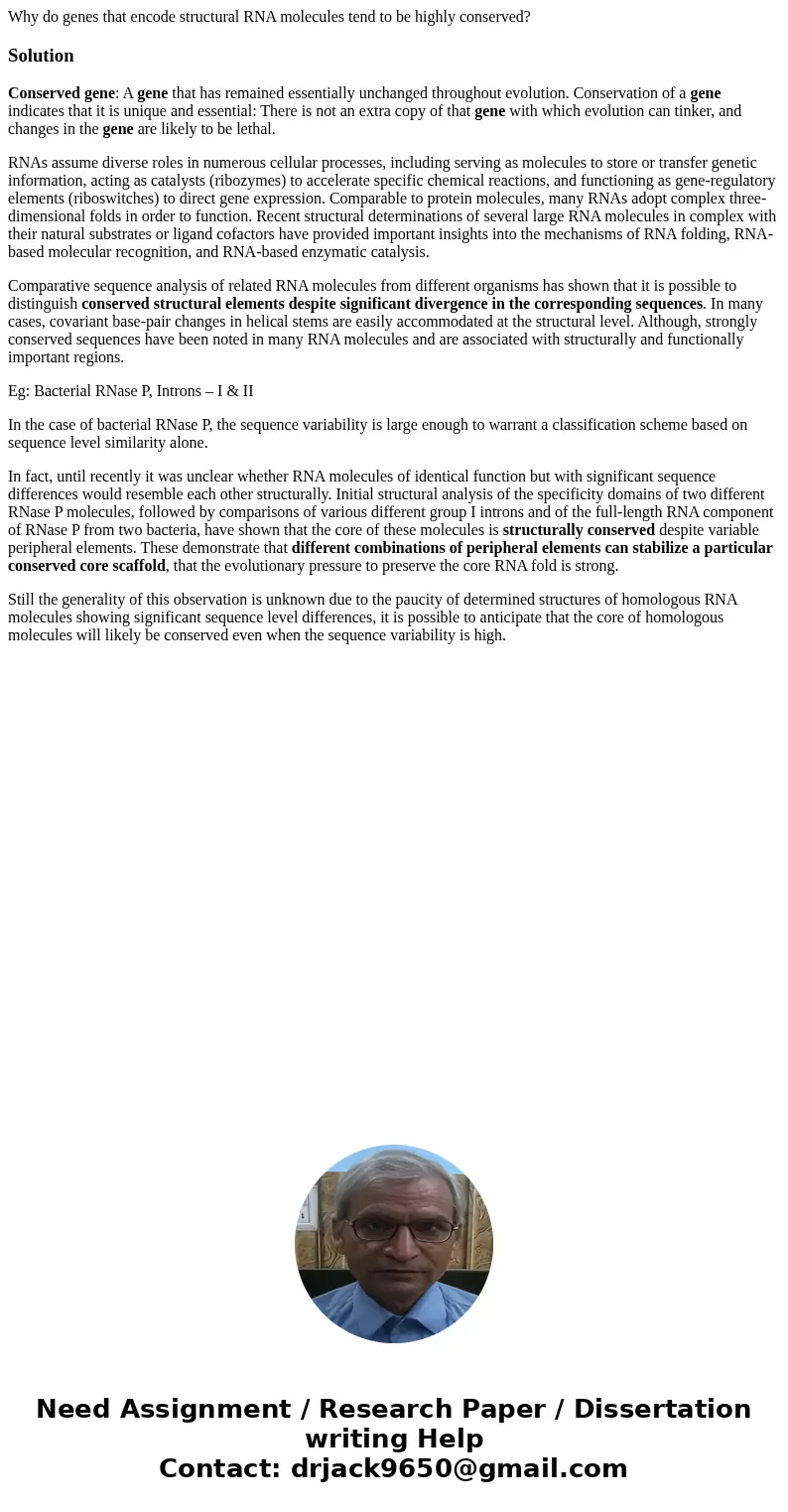Why do genes that encode structural RNA molecules tend to be
Why do genes that encode structural RNA molecules tend to be highly conserved?
Solution
Conserved gene: A gene that has remained essentially unchanged throughout evolution. Conservation of a gene indicates that it is unique and essential: There is not an extra copy of that gene with which evolution can tinker, and changes in the gene are likely to be lethal.
RNAs assume diverse roles in numerous cellular processes, including serving as molecules to store or transfer genetic information, acting as catalysts (ribozymes) to accelerate specific chemical reactions, and functioning as gene-regulatory elements (riboswitches) to direct gene expression. Comparable to protein molecules, many RNAs adopt complex three-dimensional folds in order to function. Recent structural determinations of several large RNA molecules in complex with their natural substrates or ligand cofactors have provided important insights into the mechanisms of RNA folding, RNA-based molecular recognition, and RNA-based enzymatic catalysis.
Comparative sequence analysis of related RNA molecules from different organisms has shown that it is possible to distinguish conserved structural elements despite significant divergence in the corresponding sequences. In many cases, covariant base-pair changes in helical stems are easily accommodated at the structural level. Although, strongly conserved sequences have been noted in many RNA molecules and are associated with structurally and functionally important regions.
Eg: Bacterial RNase P, Introns – I & II
In the case of bacterial RNase P, the sequence variability is large enough to warrant a classification scheme based on sequence level similarity alone.
In fact, until recently it was unclear whether RNA molecules of identical function but with significant sequence differences would resemble each other structurally. Initial structural analysis of the specificity domains of two different RNase P molecules, followed by comparisons of various different group I introns and of the full-length RNA component of RNase P from two bacteria, have shown that the core of these molecules is structurally conserved despite variable peripheral elements. These demonstrate that different combinations of peripheral elements can stabilize a particular conserved core scaffold, that the evolutionary pressure to preserve the core RNA fold is strong.
Still the generality of this observation is unknown due to the paucity of determined structures of homologous RNA molecules showing significant sequence level differences, it is possible to anticipate that the core of homologous molecules will likely be conserved even when the sequence variability is high.

 Homework Sourse
Homework Sourse